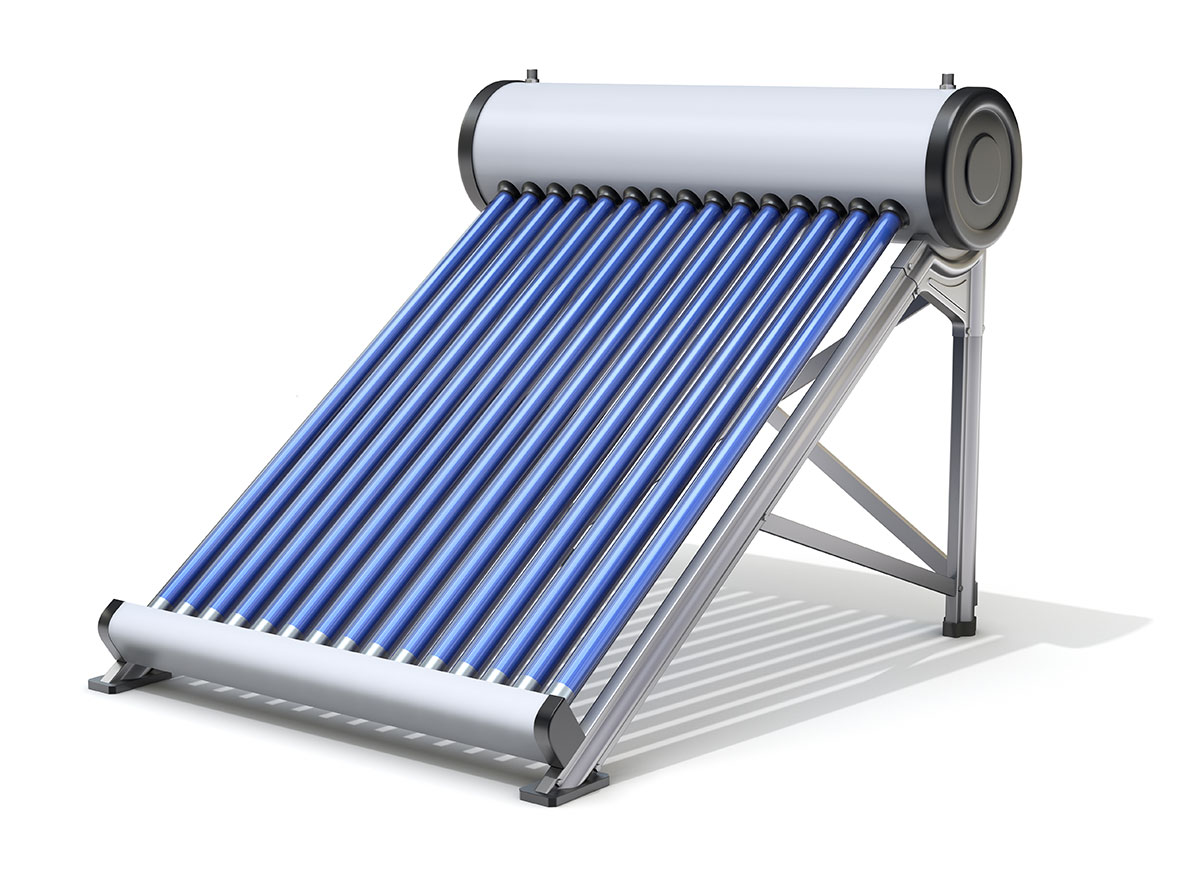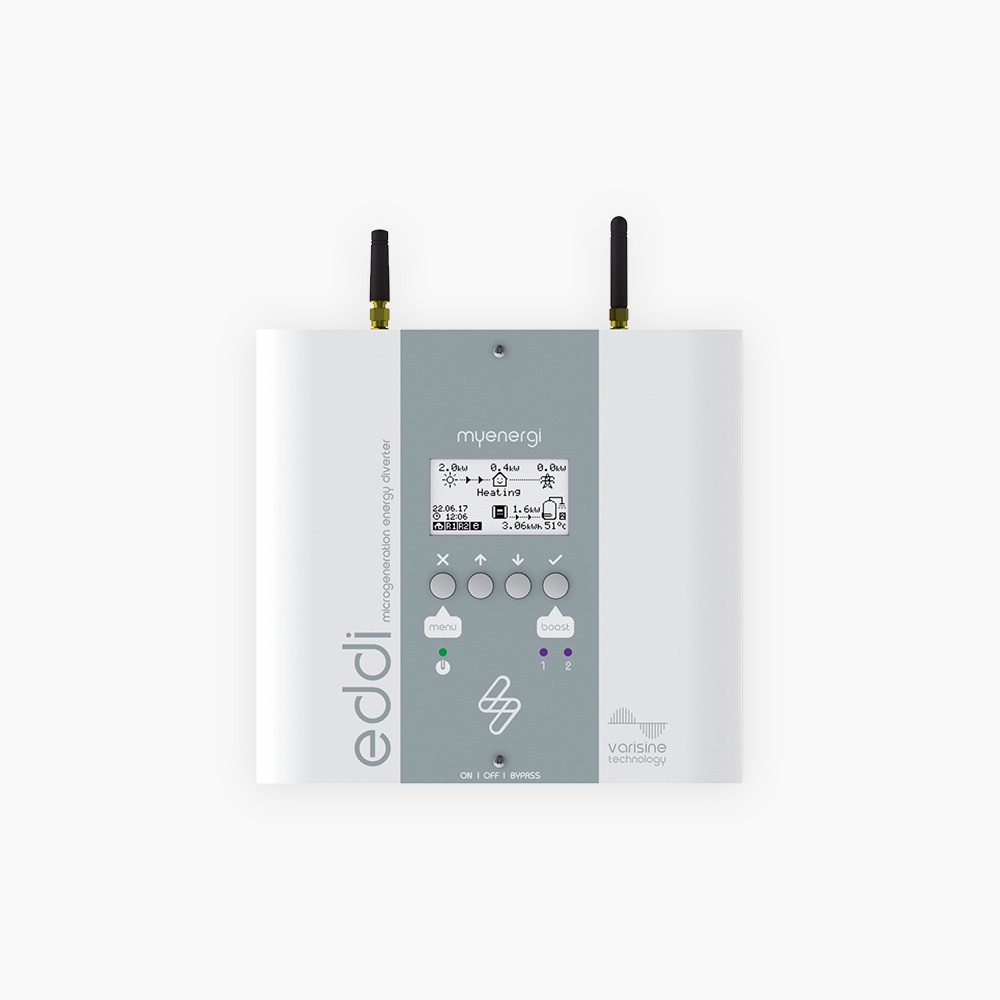A solar thermal water heating system uses the sun’s energy to produce hot water for domestic consumption free of charge.
In Ireland, a solar water heating system can meet 50-60% of a household’s hot water needs per annum, potentially saving homeowners hundreds of euros on their heating bills.
Because this makes use of renewable energy in place of burning oil or gas boilers, it also helps homes to reduce their carbon footprint.

Table of Content
How Do Solar Thermal Panels Work?
Solar thermal systems work by trapping heat from sunlight in thermal collectors, and then channel that heat to a hot water cylinder. This is in contrast with burning fossil fuels such as oil or gas to heat a boiler.
The solar thermal panels work via a heat exchanger fluid, which is heated by the sunlight and carries that heat into a domestic hot water cylinder.

Benefits of Solar Thermal Panels
There are multiple ways in which having solar thermal panels installed in a home can deliver a more comfortable lifestyle and save money all at once.
Hot Water Year Round
Installing solar thermal panels in a home can provide easy hot water year round. In summer time it can meet up to 90% of your hot water needs, though this can fall to around 25% in Winter.
Reduced Energy Bills
Once the solar thermal collectors are installed they make hot water free of charge, saving huge amounts of money on having to use an oil or gas boiler for domestic hot water.
Carbon Footprint
As a green renewable energy source, solar thermal energy can result in a drastic reduction in carbon emission from households which are mostly still reliant on fossil fuels for water heating.
Low Maintenance
As a system with little in the way of moving parts, solar thermal panels can be very low maintenance compared to a boiler. Maintenance checks may be needed as little as every 3 – 5 years.
Types of Solar Thermal Panels
There are two main types of dedicated solar thermal panels, Flat Plate Collectors and Evacuated Tube Collectors. Both of these work by pumping a heat exchange fluid in a loop from the rooftop panels to a heat exchanger coil located in the hot water cyclinder.
Flat Plate Collectors
Flat plate collectors are composed of a flat metal plate, coated in a material to help it absorb the sun’s heat. It is covered in a glass or plastic cover to protect it, surrounded by insulation to prevent heat loss, and a rigid frame for affixing it to the roof.
Either water or a heat transfer fluid is circulated through pipes underneath the metal plate and down to the hot water tank.
Evacuated Tube Solar Panels
Evacuated tube solar panels consist of glass vacuum tubes which have had the air evacuated from them to minimise the loss of heat. Inside of this is a metal pipe with an aluminium fin known as the absorber, which absorbs and transfers the heat into the fluid contained within the inner pipe.
The heat transfer fluid is then circulated to your hot water storage tank, where it heats the water via a coil.
Flat Plate vs. Evacuated Tubes
Evacuated Tube solar collectors are on average around 30% more efficient than Flat Plate solar thermal panels. This allows them to produce the same amount of hot water with a system that takes up less space, Ideal for homes that don’t have a large area of flat roof space.
A potential downside of using vacuum tubes is the larger amount of glass means that they can potentially be more vulnerable to damage.
Flat Plate solar thermal panels also tend to cost less, and their studier design makes them less likely to be damaged than evacuated tubes. The reduced efficiency can be made up for by installing more solar thermal panels if you have the roof space available.
Overall, Evacuated Tube solar thermal panels have become more popular due to their superior efficiency in retaining heat, an important benefit in lower temperatures which makes them ideal for the Irish climate.
Augmenting Solar Thermal Panels
During summer months, a solar water heating system could be sufficient to provide you with enough hot water for the day. But in overcast weather, or during the winter when they will be far less efficient, solar thermal panels may not supply enough energy.
When that happens your solar thermal panels will need to be topped up using another system. This is best achieved through either an existing boiler, or with the electric immersion in the hot water cylinder.
Water Heating With Solar PV
Solar PV panels can also be used for hot water through the installation of a solar power diverter in your solar energy system. However, solar PV costs more to installed than solar thermal panels.
The primary purpose of photovoltaic solar panels, as opposed to a solar thermal system, is to generate electricity for use in that home. But that electricity can also be put to use making hot water when you have a surplus of power.
Many Irish homes use the immersion for hot water as a backup to gas and oil heating, but this can prove expensive by using a lot of electricity. A power diverter sends excess electricity generated by solar PV panels to top up a home’s hot water supply.
MyEnergi Eddi Power Diverter
The Eddi from MyEnergi is a smart device capable of maximising the self-consumption of energy from your solar panels to ensure that you always have hot water ready to go for the lowest prices.
The Eddi tracks the energy being produced by solar PV panels in real time to make smart decisions about diverting power to produce hot water.
A highly efficient device, the Eddi can heat water using just a trickle of solar energy, less than 1kW. This means that it can work with even minimal excess power.
With internet connectivity, it is easily integrated with and operated alongside other smart home elements such as solar battery storage.
For homes with multiple heat appliances such as solar panels and a heat pump, the Eddi can also act as a switch between heat appliances based on power generation.

How Much Do Solar Thermal Panels cost?
The cost of a solar thermal system for your home is dependent on numerous factors. The number of panels you will need varies based on how many people are living in your home, how much sunlight you get, the type of panels you choose, and the direction your roof faces.
In addition, in order to qualify for the SEAI grant, you are required to install a system large enough for the average number of people that could live in your house, not the number that currently do.
Solar thermal panels generally cost between €800 and €1,200 per square metre, but that price could be even lower now with changes to VAT for domestic solar.
Solar Thermal Panels Grant
Grant funding is available from the Sustainable Energy Authority of Ireland for different solar water heating systems.
The SEAI grant has a fixed value of €1,200 regardless of the amount or cost of the solar thermal panels being installed.
The grant is open to all homes built and occupied prior to 2021, including private landlords renting out the property.
In order to qualify for the grant the solar thermal system must deliver a certain threshold of renewable energy per square metre of floor space in your home. Therefore, if you have a larger home, or get less sunlight, more solar thermal panels will be needed in order to receive the grant.

7 Years
A typical solar installation is fully paid back within 7 years. All solar panels we recommend are under warranty for 25 years, so you will enjoy at least 17 years of free energy generation.
0% VAT
As of 10 May 2023, the government has removed all VAT on solar installation and solar panel supply. This means solar has never been more affordable!
Government Grants
There is a range of government grants available for all new solar installations. Our team will guide you through the application process.
Solar Water Heater FAQs

Get a Solar Thermal Energy Today
Find out more today about what solar thermal technology can do for you, cutting your fuel bills and making your home more energy efficient.


